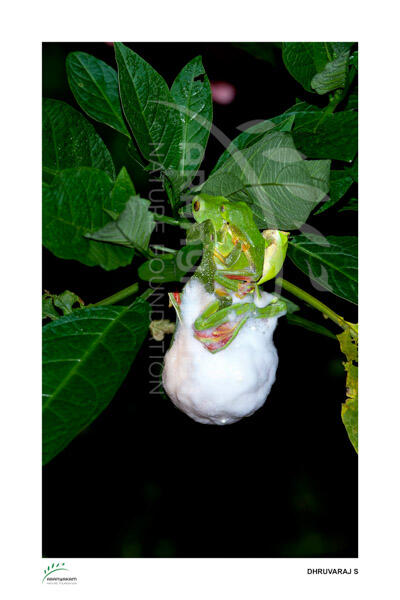
The Malabar gliding frog, also known as the Malabar flying frog, is a species of frog found in the Western Ghats mountain range in India. It is known for its ability to glide from tree to tree using webbed skin flaps between its fingers and toes, which allows it to cover distances of up to 12 meters in a single glide.
The Malabar gliding frog is a relatively large frog, with a green or brown coloration and a flattened body shape. It is typically found in forested areas and near water bodies, where it feeds on a variety of small animals such as insects, spiders, and other invertebrates.
The Malabar gliding frog is not considered to be endangered, although habitat loss and degradation due to deforestation and human activities are potential threats to its populations in some areas. Conservation efforts, such as protecting natural habitats and regulating logging and other human activities, are important for the long-term survival of this species.
Amplexus
Amplexus is a term used to describe the mating behavior of frogs and toads. During amplexus, the male frog clasps the female from behind with his front legs, holding onto her tightly to fertilize her eggs as she lays them.
The specific type of amplexus can vary between frog species. In some species, the male grasps the female around the waist, while in others he holds onto her front legs. In some species, the male may also release sperm onto the eggs as the female lays them.
The duration of amplexus can also vary between species, with some lasting only a few minutes and others lasting for several hours or even days.
Amplexus is an important part of the reproductive process for frogs and toads, and ensures that the eggs are fertilized successfully. However, it can also make the frogs vulnerable to predators, as they are often immobile and focused on mating during this time.
